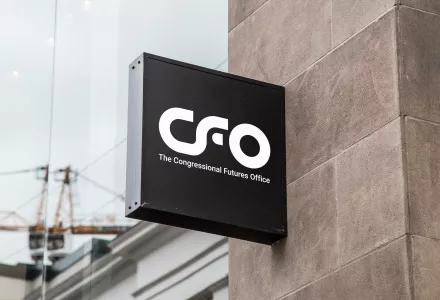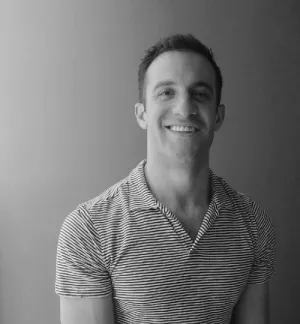
A Modern Model for Science & Technology Expertise in Congress
Download the Full Publication
Acknowledgements
This report is a product of the generosity of many. We owe particular thanks to Secretary Ash Carter, Laura Manley, and Maeve Campbell of the Technology and Public Purpose Project at the Belfer Center, our faculty advisors Jason Furman of Harvard Kennedy School and Willy Shih of Harvard Business School, and John Haigh of the Mossavar-Rahmani Center for Business and Government.
About the Authors
Grant Tudor holds an MBA from Harvard Business School and an MPP from Harvard Kennedy School and was a Fellow at Harvard University’s Center for Public Leadership.
Justin Warner holds an MBA from Harvard Business School and an MPP from Harvard Kennedy School and was a Fellow at Harvard University’s Center for Public Leadership.
The authors can be reached at tudor.grant@gmail.com and justin_warner@outlook.com.
Executive Summary
This report interrogates the widening gap between responsive lawmaking in Congress and the deepening complexity of advancements in science and technology. It finds that certain weakened capabilities have atrophied the organization’s absorptive capacity, or the ways by which it recognizes the value of, assimilates, and makes use of knowledge outside of itself. We propose the design of a new internal body—the Congressional Futures Office—as an optimal response among a set of considered options.
* * *
Federal lawmaking is failing to adequately address issues of public interest associated with S&T advancements. We observe that legislative outcomes, ranging from inefficiencies in public programs to antiquated regulatory frameworks, do not reflect most lawmakers’ intentions. Inadequate or unresponsive lawmaking to S&T-related challenges is not likely a deliberate decision of Congress. Instead, lawmakers struggle to devise effective legislative responses.
The problem is not a lack of technical information. Instead, internal capabilities are unable to cope with a surfeit of external expertise, which is typically unattuned to congressional needs. Decreases in congressional resources in terms of people and funding have handicapped the institution. Further, phenomena such as hyperpolarization and the circumvention of committees have increasingly curbed internal information processing functions. While there exists bipartisan appetite to address select S&T-related issues—variable by topic and committee of jurisdiction – partisan and present-focused priorities also limit the role of expertise.
These weakened organizational capabilities have atrophied Congress’s absorptive capacity: its ability to recognize the value of new, external information, to assimilate it, and to apply it to desired ends. For private firms, absorptive capacity is essential to long-term survival; innovation rests on recognizing new knowledge in the external environment and integrating it into internal activities. For Congress, a decreasing ability to successfully exploit external knowledge generates poor legislative outcomes.
External entities and internal support bodies are failing to address these institutional constraints. Large technology companies have expanded lobbying capacities to preempt or influence regulation, biasing their expansive sources of expertise. Increasing ideological bias also colors the work of civil society actors such as think tanks. Questions of credibility and usefulness plague both sources. Further, Congress’s existing support functions (e.g., CRS, GAO, NASEM) are limited in their S&T-relevant capacities to support policymaking given current mandates, methods, and products. Expanding their services is unlikely to comprehensively address the widening gap between lawmaking and S&T advancements.
Congress previously had a body exclusively dedicated to providing analytical support on
S&T-related policy matters. The Office of Technology Assessment (OTA) was embedded inside Congress, formally producing ‘technology assessments’ and informally engaging with members and staff on complex S&T issues. While it generated substantial value—as reported by members and staff themselves and as reflected in various indicators of legislative impact—the usefulness of its products faced legitimate criticisms. It was also subjected to political criticisms of partisan bias. OTA was defunded in 1995 after 23 years in operation, made possible by having directly served only a narrow constituency within Congress.
Simply reinstating OTA, however, is not an appropriate solution to today’s problems. Successful attributes of the body, including its intimate access and frequent interactions with members and staff, suggest necessary features of any intervention to enhance Congress’s absorptive capacity. However, significant institutional changes within Congress, combined with prior operational weaknesses of OTA, would not position a reinstated body for success. Historical political challenges, moreover, hamper what should otherwise be a bipartisan effort to address congressional constraints.
Efforts to build OTA-like capacities at existing congressional support services exhibit limited potential for impact. Recent approaches, such as the creation of STAA at GAO, address a limited scope of heterogeneous and pressing congressional needs as diagnosed in this report; services typically mirror OTA-like products, themselves of limited use in today’s environment. Additionally, a lack of embeddedness within Congress is disadvantageous for addressing the nuanced institutional constraints weakening Congress’s ability to make use of external knowledge across an expanse of S&T-related policy domains.
Congress should establish a new and deeply embedded internal support body better suited to its needs and contemporary context. Strengthening Congress’s capabilities requires a reinvented model for integrating external expertise into the policymaking process. We propose the Congressional Futures Office (CFO) as a novel model of congressional support. OTA exemplified a breakthrough approach for its time—later copied widely across Europe. Rather than replicate past solutions, Congress should again take the lead in science and technology policymaking with a deliberate, modernized, and experimental approach.
CFO models how a modern support body would enhance Congress’s ability to transform external knowledge into better legislative outcomes. Its institutional design reflects a response to Congress’s central problem of low absorptive capacity. As an embedded function, CFO is designed to generate value for a broad congressional constituency, gradually strengthening capabilities through open-ended product-service design and dispersed global networks of expertise. It takes the approach that addressing large and difficult S&T issues starts with satisfying proximate and pressing congressional needs.
Through the model, we illustrate how factors both external and internal to Congress examined in this report would influence a new body’s design and draw upon learnings from the strengths and shortcomings of OTA and other complementary support bodies. This report provides policymakers and other analysts with an analysis of the fundamental challenges constraining congressional capabilities and a blueprint to make a new solution practically operational.
Warner, Justin and Grant Tudor. “The Congressional Futures Office.” Paper, Belfer Center for Science and International Affairs, Harvard Kennedy School, May 2019.






